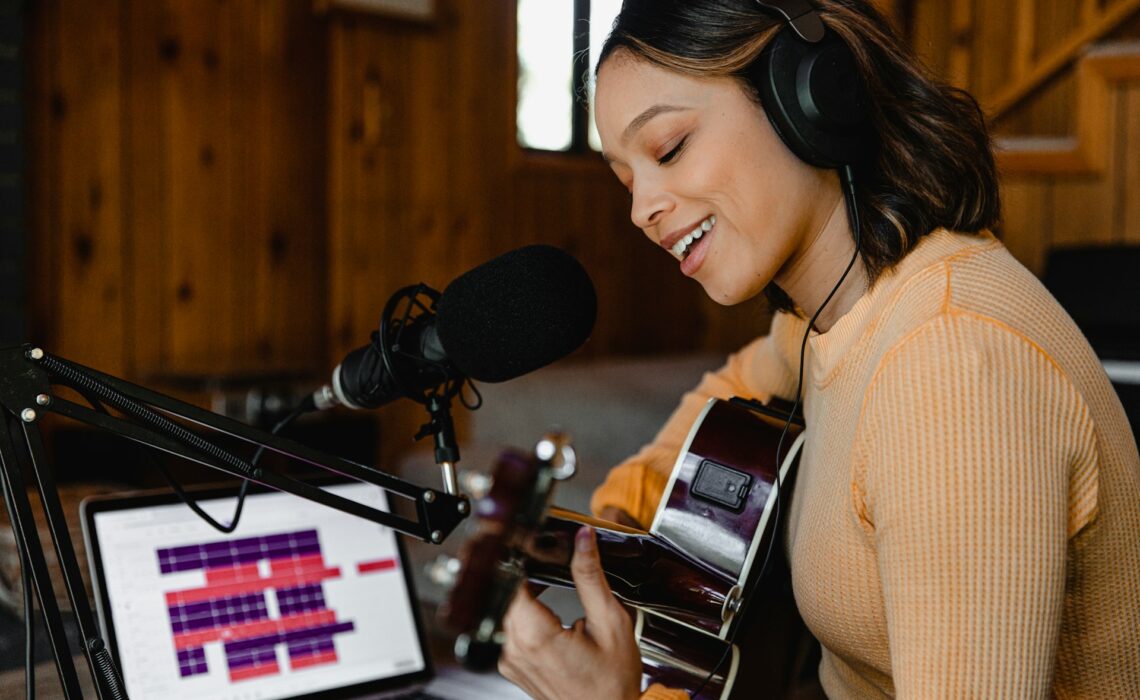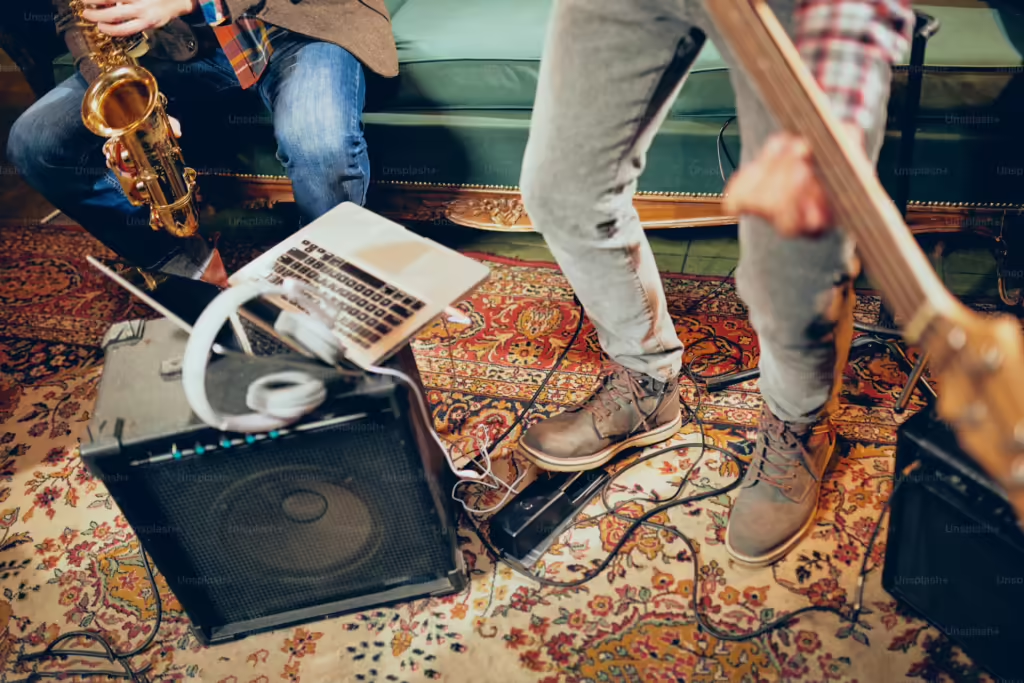
Hi, fellow Roadie fans! Welcome to the ultimate guide to prepping your band to collaborate remotely.
The early 2020s made remote musical collabs a necessity, and many of us discovered just how awesome playing with other musicians around the globe can be.
If your band is keen to continue this trend, we have everything you need.

Step 1: Check Your Tech and Tools
- Digital Audio Workstation (DAW) Software
An excellent digital audio workstation (DAW) is the backbone of your home recording studio setup. Look for DAW main features like:
- Audio editing tools
- Automation (to control parameters like volume, panning, and effects)
- Compatibility and import/export options
- Flexible routing and bussing
- Mixing and mastering tools
- Multitrack recording
- Musical Instrument Digital Interface (MIDI) support
- Time and pitch correction
- User interface and workflow
- Virtual instruments and plugins
- Audio Interface and Quality Microphone
An audio interface significantly enhances your recording quality. Consider budget-friendly audio interface recommendations and choose the best mics to capture clear, professional sound. No one wants crackly collabs!
- Headphones and Monitors
Accurate sound reproduction is vital for mixing and mastering. Invest in the best headphones for music production and reliable studio monitors to ensure your tracks sound great across all devices.
- Cloud Storage Services
Cloud storage platforms like Google Drive, One Drive, or Dropbox help streamline remote music collaboration. These platforms make it easy to share files and allow access to music collaboration software.
- Music Collaboration Platforms
Another option is using a music collaboration platform incorporating file sharing, storage, and communication. Some of these platforms may even include some DAW functionality, so you can tick a few boxes at once.
Give one of these a try:
- Soundtrap
- SoundBetter
- Boombox
- BandLab
- Landr
- Communication Tools
Some of the best communication tools for remote music collaboration include Microsoft Teams, Zoom, Slack, and Discord. You can also use other meeting tech like a Neat Bar to ensure every band meeting has excellent audio and superior-quality video.
Step 2: Prep Your Home Recording Studio Setup
Where you record is as important as how. Use these tips to get the best results:
- Choose the Right Space
Select a quiet area with minimal background noise for your home recording studio setup. Consider soundproofing your home studio with foam panels and carpets to improve the acoustics.
- Invest in Essential Music Equipment
Invest in the must-have equipment for your home studio setup that we mentioned above. Then, enhance your setup with accessories like pop filters, mic stands, and quality cables.
- Music Collaboration Planning and Workflow Management
Essential aspects of collaboration include knowing who is responsible for what. Make sure everyone knows what they need to do and when they need to do it.
Step 3: Get Your Legal Affairs In Order
Agreements are crucial in remote music collaboration. A written contract should outline roles, responsibilities, and revenue splits. It should also include key elements like project scope, timeline, and recording rights.

Make Music Remotely
There you have it. Everything you need to ensure a smooth, successful, and superb-sounding remote collaboration with your band. With these tips, you can make music with anyone, anywhere in the world.

